World Heritage inscription of Xixia Imperial Tombs advances Global Civilization Initiative: official
Source: Xinhua
Editor: huaxia
2025-07-12 20:38:00
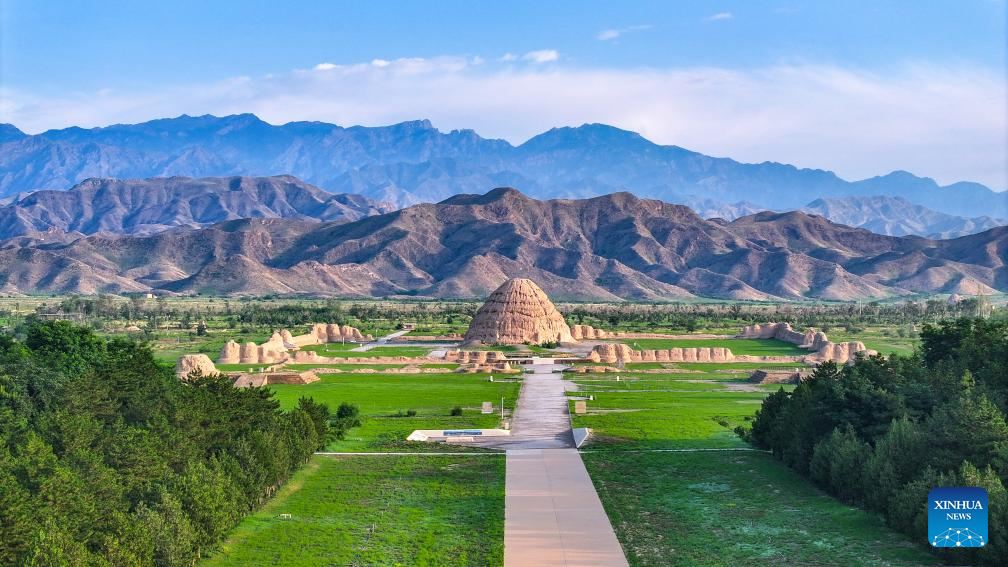
A drone photo taken on July 10, 2025 shows a view of the No.3 tomb of the Xixia Imperial Tombs in Yinchuan, northwest China's Ningxia Hui Autonomous Region. The inscription of the Xixia Imperial Tombs as a World Heritage site marks a significant achievement in China's efforts to implement and advance the Global Civilization Initiative, said a Chinese culture and tourism official. On Friday, the United Nations Educational, Scientific and Cultural Organization (UNESCO) inscribed the tombs on its World Heritage List, bringing the total number of World Heritage sites in China to 60. (Xinhua/Feng Kaihua)
BEIJING, July 12 (Xinhua) -- The inscription of the Xixia Imperial Tombs as a World Heritage site marks a significant achievement in China's efforts to implement and advance the Global Civilization Initiative, said a Chinese culture and tourism official.
On Friday, the United Nations Educational, Scientific and Cultural Organization (UNESCO) inscribed the tombs on its World Heritage List, bringing the total number of World Heritage sites in China to 60.
"The application effort has demonstrated China's ongoing commitment to strengthening the holistic and systematic protection, preservation and sustainable use of its cultural and natural heritage," said Vice Minister of Culture and Tourism Rao Quan, also head of the National Cultural Heritage Administration (NCHA), in an interview with Xinhua.
It was also an opportunity to demonstrate to the world the historical and cultural values of the Chinese civilization as well as its outstanding features, Rao added.
Located at the foot of Helan Mountain in Yinchuan, capital of Ningxia Hui Autonomous Region, the tombs were built by the Tangut, an ethnic group that thrived in northwest China between the 11th and 13th centuries.
The Xixia Imperial Tombs are the largest, most well-preserved and highest-ranking archaeological remains of the Xixia Dynasty (1038-1227), according to Rao.
The site is a testament to the cultural fusion and interactions among multiple traditions, serving as vital evidence of the diverse yet unified nature of Chinese civilization and the formation of a multi-ethnic nation, while holding an irreplaceable place in the history of world civilizations, he added.
Regarding follow-up work related to the Xixia Imperial Tombs, the official pledged to further strengthen heritage protection, advance academic research in archaeology and cultural relics, strengthen the capacity of heritage management institutions, and enhance the systems for showcasing and interpreting the site's cultural value.
This year marks the 40th anniversary of China's accession to the World Heritage Convention. The NCHA plans to enhance the protection and promotion of China's World Cultural Heritage sites and nominate additional sites for inclusion on the World Heritage List, Rao said.
He called for more efforts to better showcase Chinese civilization, promote cultural exchanges and mutual learning among civilizations, and make an even greater contribution to the flourishing of world civilizations. ■

The remnant of a stone tablet is pictured at the Xixia Imperial Tombs Museum in Yinchuan, northwest China's Ningxia Hui Autonomous Region on July 5, 2025. The inscription of the Xixia Imperial Tombs as a World Heritage site marks a significant achievement in China's efforts to implement and advance the Global Civilization Initiative, said a Chinese culture and tourism official.
On Friday, the United Nations Educational, Scientific and Cultural Organization (UNESCO) inscribed the tombs on its World Heritage List, bringing the total number of World Heritage sites in China to 60. (Xinhua/Yang Zhisen)
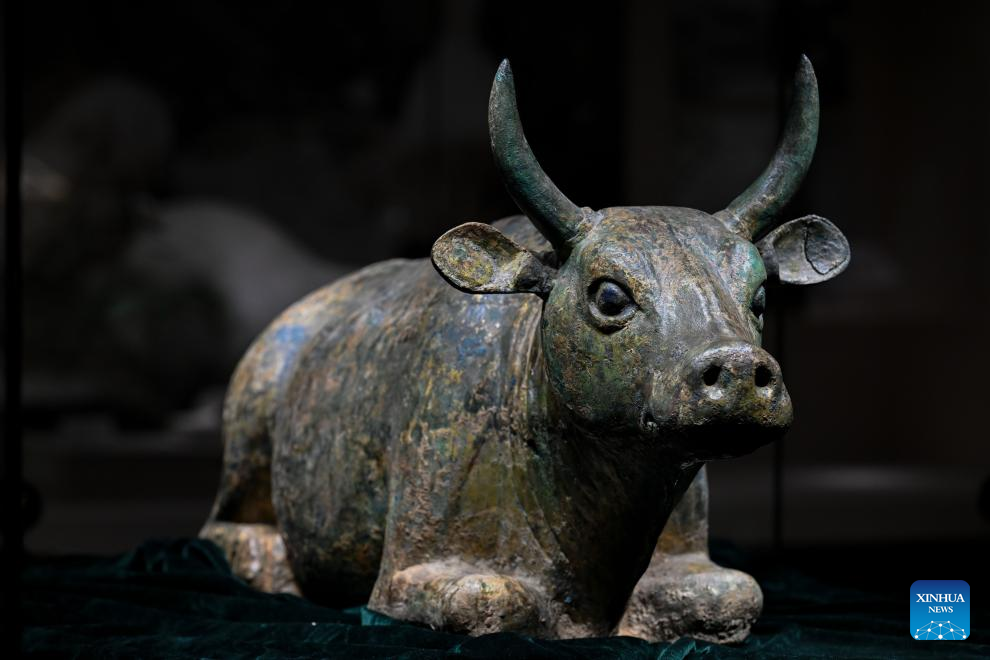
A gilt bronze ox unearthed from a Xixia imperial tomb is displayed at Ningxia Museum in Yinchuan, northwest China's Ningxia Hui Autonomous Region, Nov. 26, 2024. The inscription of the Xixia Imperial Tombs as a World Heritage site marks a significant achievement in China's efforts to implement and advance the Global Civilization Initiative, said a Chinese culture and tourism official.
On Friday, the United Nations Educational, Scientific and Cultural Organization (UNESCO) inscribed the tombs on its World Heritage List, bringing the total number of World Heritage sites in China to 60. (Xinhua/Feng Kaihua)

Cultural relics unearthed from the Xixia Imperial Tombs are seen at the Xixia Imperial Tombs Museum in Yinchuan, northwest China's Ningxia Hui Autonomous Region on July 9, 2025. The inscription of the Xixia Imperial Tombs as a World Heritage site marks a significant achievement in China's efforts to implement and advance the Global Civilization Initiative, said a Chinese culture and tourism official.
On Friday, the United Nations Educational, Scientific and Cultural Organization (UNESCO) inscribed the tombs on its World Heritage List, bringing the total number of World Heritage sites in China to 60. (Xinhua/Yang Zhisen)
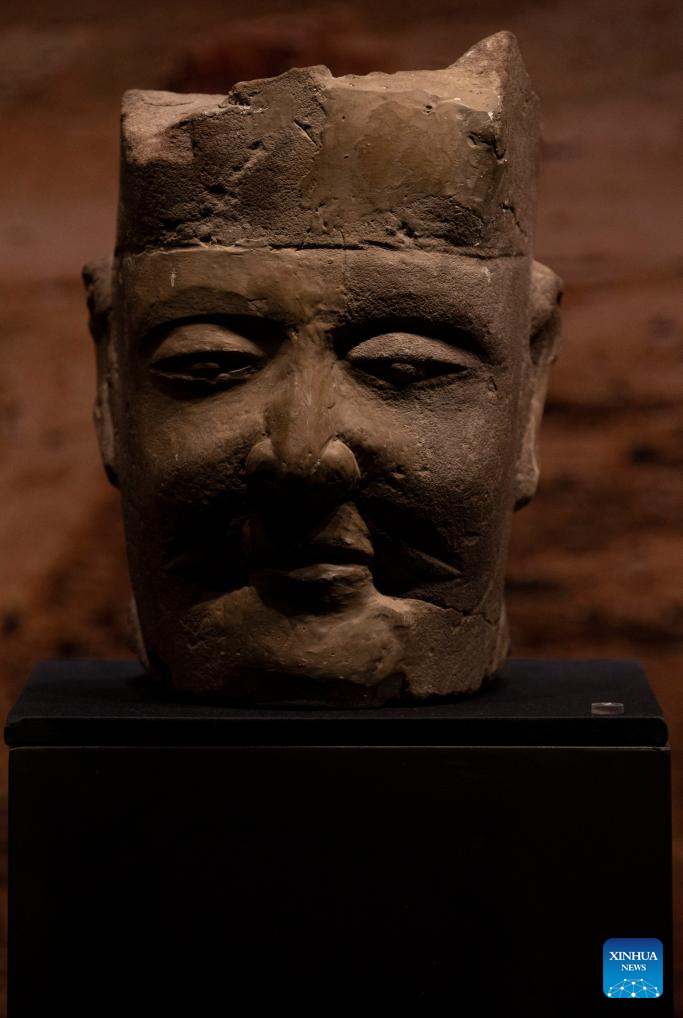
A part of a red sandstone statue is pictured at the Xixia Imperial Tombs Museum in Yinchuan, northwest China's Ningxia Hui Autonomous Region on July 5, 2025. The inscription of the Xixia Imperial Tombs as a World Heritage site marks a significant achievement in China's efforts to implement and advance the Global Civilization Initiative, said a Chinese culture and tourism official.
On Friday, the United Nations Educational, Scientific and Cultural Organization (UNESCO) inscribed the tombs on its World Heritage List, bringing the total number of World Heritage sites in China to 60. (Xinhua/Yang Zhisen)
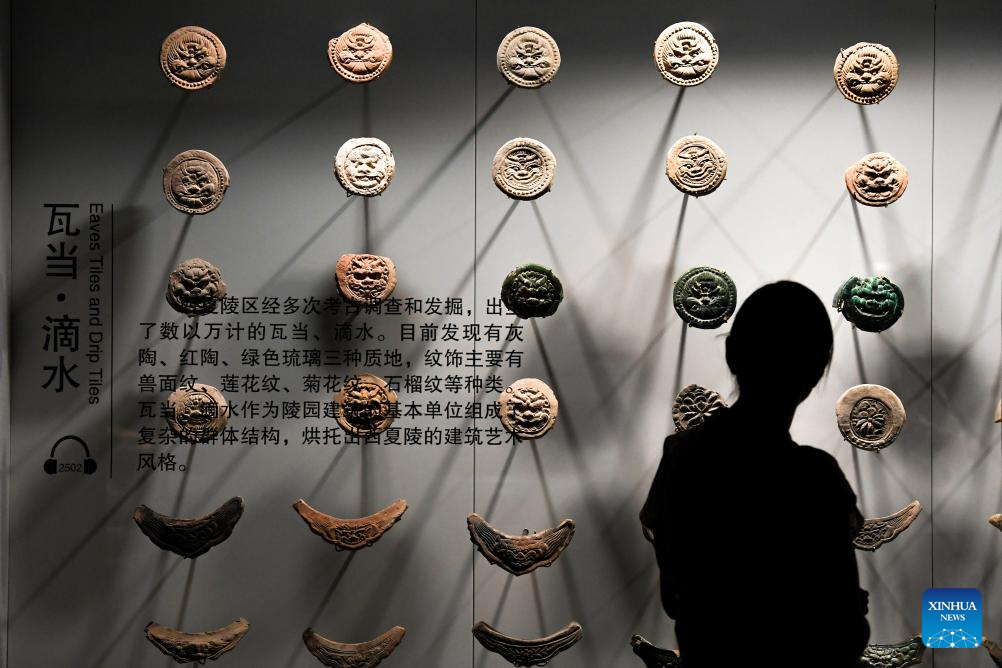
Tourists view cultural relics displayed at the Xixia Imperial Tombs Museum in Yinchuan, northwest China's Ningxia Hui Autonomous Region on Oct. 2, 2019. The inscription of the Xixia Imperial Tombs as a World Heritage site marks a significant achievement in China's efforts to implement and advance the Global Civilization Initiative, said a Chinese culture and tourism official.
On Friday, the United Nations Educational, Scientific and Cultural Organization (UNESCO) inscribed the tombs on its World Heritage List, bringing the total number of World Heritage sites in China to 60. (Xinhua/Feng Kaihua)
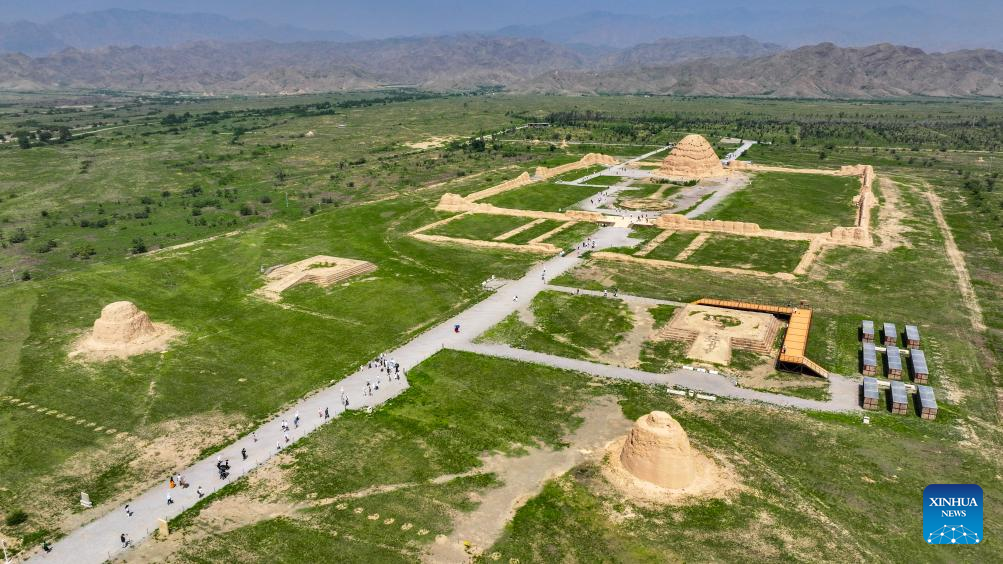
A drone photo taken on July 10, 2025 shows tourists visiting the Xixia Imperial Tombs scenic spot in Yinchuan, northwest China's Ningxia Hui Autonomous Region. The inscription of the Xixia Imperial Tombs as a World Heritage site marks a significant achievement in China's efforts to implement and advance the Global Civilization Initiative, said a Chinese culture and tourism official.
On Friday, the United Nations Educational, Scientific and Cultural Organization (UNESCO) inscribed the tombs on its World Heritage List, bringing the total number of World Heritage sites in China to 60. (Xinhua/Feng Kaihua)
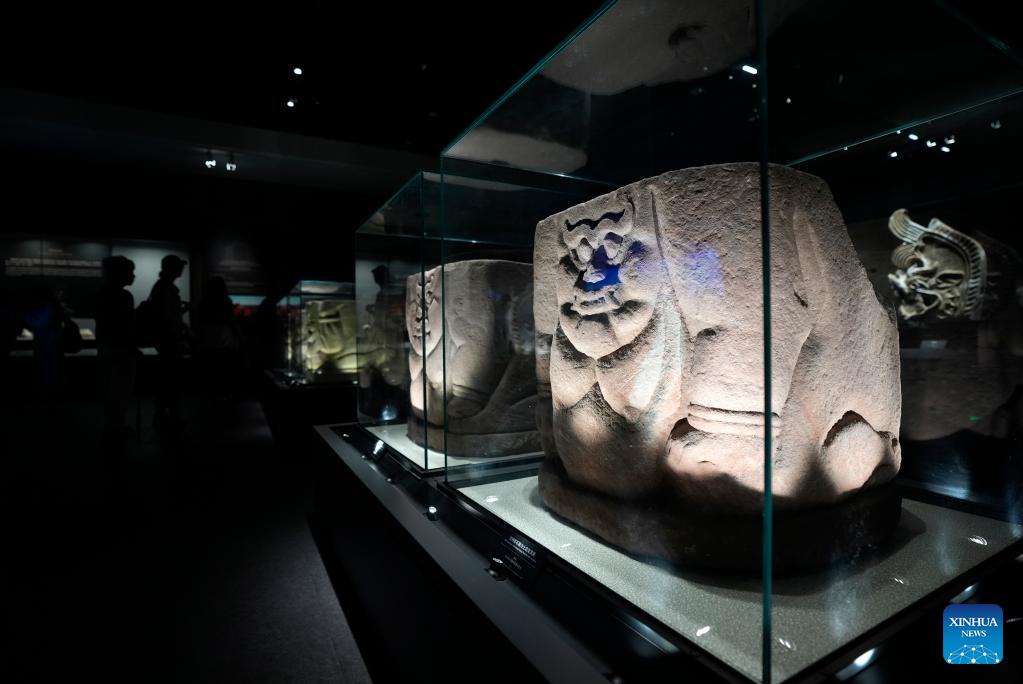
Red sandstone carvings are displayed at the Xixia Imperial Tombs Museum in Yinchuan, northwest China's Ningxia Hui Autonomous Region on July 9, 2025. The inscription of the Xixia Imperial Tombs as a World Heritage site marks a significant achievement in China's efforts to implement and advance the Global Civilization Initiative, said a Chinese culture and tourism official.
On Friday, the United Nations Educational, Scientific and Cultural Organization (UNESCO) inscribed the tombs on its World Heritage List, bringing the total number of World Heritage sites in China to 60. (Xinhua/Yang Zhisen)



